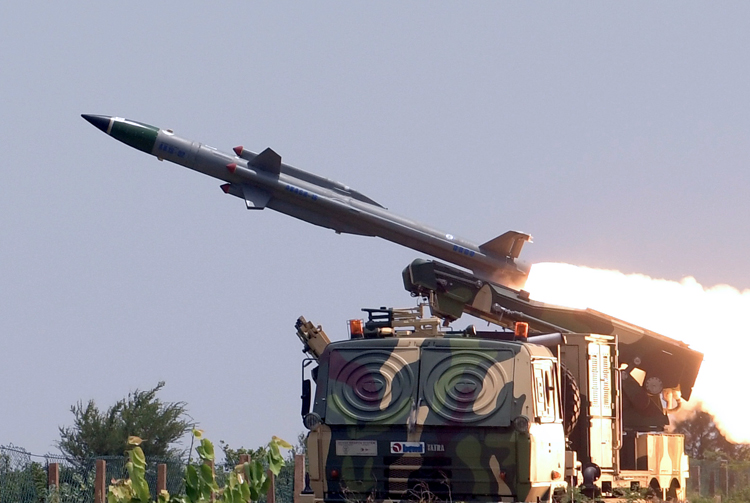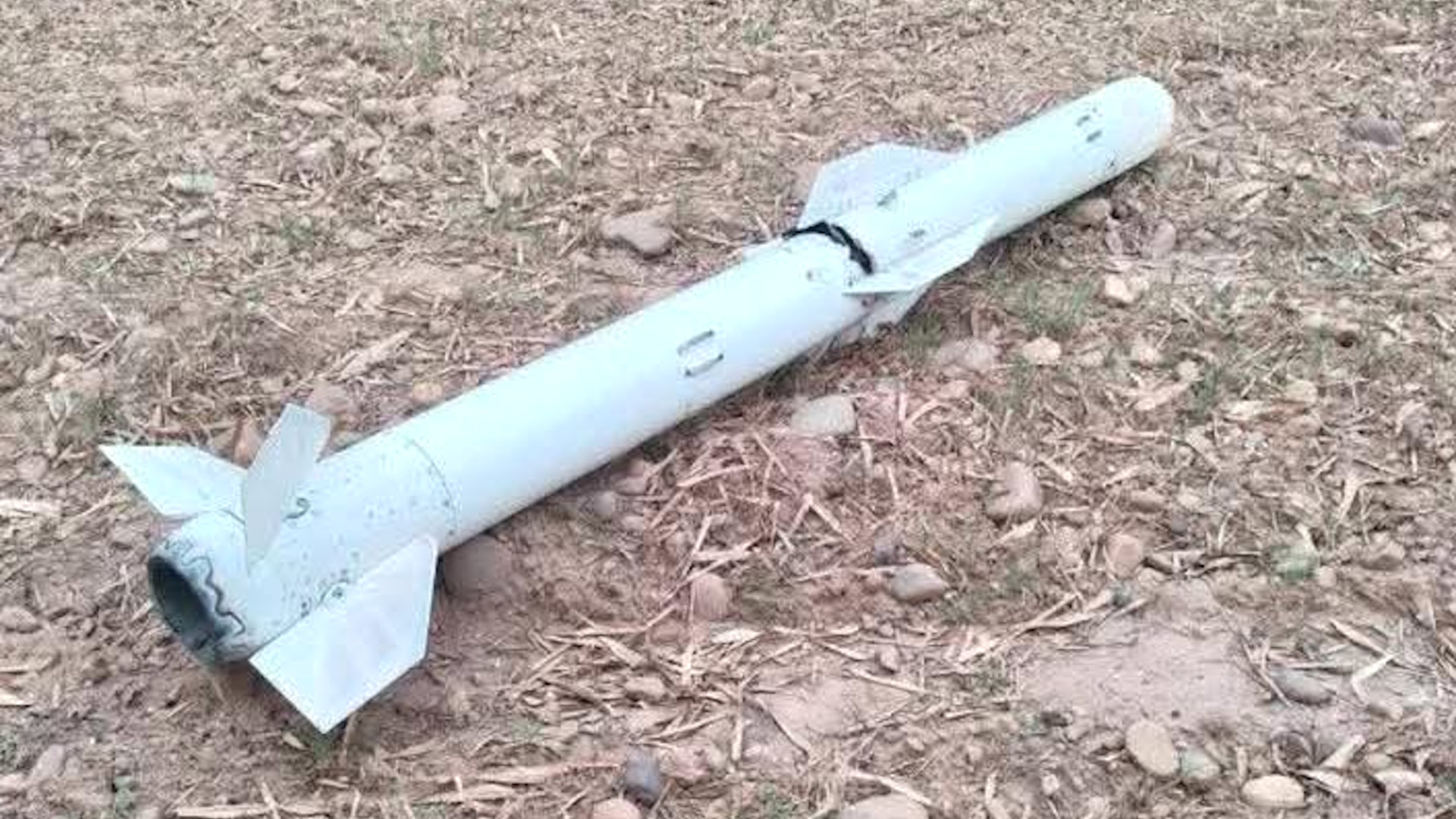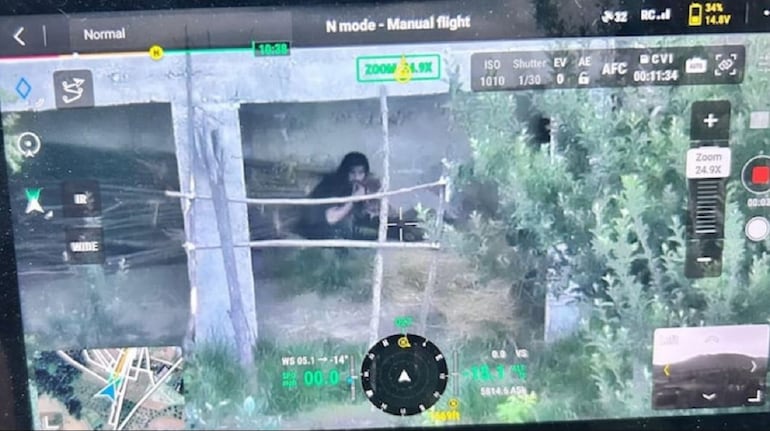admin
SOURCE: IDRW.ORG


Retired Brigadier General Yücel Karauz, Türkiye’s former Military Attaché in Azerbaijan, commented on Armenia’s recent acquisition of the Indian-made Akash air defense system, highlighting its implications during a critical juncture in regional peace negotiations. While acknowledging the defensive nature of the Akash system, Karauz emphasized that its deployment sends a problematic signal amid sensitive talks aimed at stabilizing the South Caucasus region.
The Akash air defense system, developed by India’s Defence Research and Development Organisation (DRDO) and produced by Bharat Electronics Limited (BEL), is designed to protect a nation’s airspace by intercepting aerial threats. As Karauz noted, “The AKASH System is, of course, a defence system. Air defence is aimed at protecting the airspace. After all, it is not an offensive weapon system.” With a coverage area of up to 2,000 square kilometers, the system provides Armenia with a significant boost to its air defense capabilities, enabling it to counter potential attacks on its territory.
Continue readingSOURCE: IDRW.ORG


In a significant step toward bolstering India’s indigenous defense capabilities, Armoured Vehicles Nigam Limited (AVNL) and Bharat Electronics Limited (BEL) have signed a teaming agreement to jointly develop advanced electronic devices for wheeled armoured fighting vehicles (AFVs). The agreement, formalized on May 13, 2025, marks a deepening collaboration between two of India’s premier defense public sector undertakings (PSUs), aligning with the nation’s Atmanirbhar Bharat (self-reliant India) and Make in India initiatives. The signing ceremony took place in the presence of Shri Manoj Jain, Chairman and Managing Director (CMD) of BEL, Shri Sanjay Dwivedi, CMD of AVNL, Shri Satyabrata Mukherjee, Director (Operations) of AVNL, and senior officers from both organizations.
Wheeled AFVs, such as the Wheeled Armoured Platform (WhAP) developed by the Defence Research and Development Organisation (DRDO) and manufactured by Tata Advanced Systems, offer superior mobility, lower maintenance costs, and adaptability compared to tracked vehicles. These platforms are increasingly vital for rapid deployment in diverse terrains, from urban environments to border regions. The electronic devices targeted under this agreement are expected to include advanced fire control systems, sighting systems, communication modules, and potentially AI-driven situational awareness tools, enhancing the lethality and survivability of wheeled AFVs.
Continue readingSOURCE: AFI


On May 15, 2025, Chinese bloggers on social media platforms like Weibo and Douyin have reacted to India’s recovery of a near-intact PL-15E missile, which was fired by Pakistan Air Force (PAF) jets during a recent clash with India. The bloggers assert that the PL-15E, an export variant of China’s advanced PL-15 beyond-visual-range air-to-air missile (BVRAAM), is a significantly downgraded version compared to the one used by the People’s Liberation Army Air Force (PLAAF). They argue that the missile falling into India’s hands will not provide New Delhi with any significant strategic advantage in a potential conflict with China.
The PL-15E, integrated with Pakistan’s JF-17 Block III and J-10CE jets, was rendered ineffective by India’s advanced electronic warfare (EW) systems during the clash, with one near-intact missile recovered in Hoshiarpur, Punjab, on May 9, 2025, as reported by idrw.org. Indian defense analysts initially viewed the recovery as an intelligence windfall, potentially offering insights into China’s missile technology. However, Chinese bloggers have dismissed these claims, emphasizing that the export variant lacks the advanced features of the PL-15 used by the PLAAF. “The PL-15E is a watered-down version with reduced range, a less capable seeker, and simplified datalink systems,” one prominent blogger wrote, suggesting that the missile’s core technology remains well-protected.
Continue readingSOURCE: AFI


In a covert and high-stakes move to challenge India’s growing air defence dominance, Pakistan reportedly attempted to use the CM-400AKG—also known as CKG-400—supersonic anti-ship missile against Indian strategic air defence assets, including the formidable S-400 Triumf system. Developed by China and marketed as a “carrier killer,” the CM-400AKG is known for its high speed and difficult-to-intercept flight profile. However, the Pakistani gambit ended in failure, highlighting both the limitations of Chinese missile technology and the robustness of India’s integrated air defence network.
The CM-400AKG, developed by China Aerospace Science and Industry Corporation (CASIC), was supplied to Pakistan as part of the broader China-Pakistan defence cooperation. Capable of reaching speeds up to Mach 5 and boasting a range of approximately 240–250 km, the missile is launched from platforms such as the JF-17 Thunder multirole fighter.
Continue readingSOURCE: AFI


On May 13, 2025, aviation enthusiasts and defense analysts were treated to an impressive sight as the Tejas Mk1A, India’s indigenous Light Combat Aircraft (LCA), was observed in flight sporting an air-to-air (A2A) configuration. The aircraft, a prototype of the advanced Mk1A variant, was equipped with a formidable payload: two Astra Mk-1 missiles and two ASRAAM (Advanced Short Range Air-to-Air Missile) systems. This development marks a significant milestone in the Tejas program, showcasing its evolving capabilities as a multi-role fighter in the Indian Air Force (IAF).
The Tejas Mk1A, developed by Hindustan Aeronautics Limited (HAL), is an upgraded version of the original Tejas Mk1, featuring enhanced avionics, improved maintainability, and an Active Electronically Scanned Array (AESA) radar. The aircraft is designed to bridge the gap between legacy fighters like the MiG-21 and more advanced platforms in the IAF’s fleet, offering a lightweight, agile solution for both air defense and ground attack roles.
Continue readingSOURCE: AFI


On May 3, 2025, Pakistan conducted a training launch of its Abdali Weapon System, a short-range surface-to-surface ballistic missile with a reported range of 450 kilometers, as part of Exercise INDUS. This test, amid heightened tensions with India following the Pahalgam terror attack, has drawn significant attention. Leveraging insights from the X post by @DfIlite , this article examines the missile’s visual characteristics, specifically the pixel count ratio, to compare the recently tested Abdali missile with its older known version. Additionally, we address reported modifications, such as the absence of fins, and the symbolic use of “Abdali caps” by Pakistan’s Strategic Plans Division (SPD) personnel.
According to @DfIlite ’s analysis, a pixel count ratio comparison was performed between images of the Abdali missile tested on May 3, 2025, and its older, previously documented version. The pixel count ratio—a method often used to assess proportional consistency in missile design through imagery—yielded identical results for both versions. This suggests that the core structural dimensions of the missile, such as its length-to-diameter ratio, remain unchanged. The consistency in pixel count ratio indicates that the tested missile is not a fundamentally new design but rather a variant of the existing Abdali (Hatf-II) system.
Continue readingSOURCE: AFI


In a landmark achievement for India’s defense sector, Bengaluru-based Valdel Advanced Technologies Pvt. Ltd. (VATPL), in collaboration with the Indian Navy and supported by the Defence Research and Development Organisation’s (DRDO) Technology Development Fund (TDF), has successfully developed the country’s first A60-certified naval door. This watertight, gas-tight, and fire-class compliant door marks a significant milestone in India’s journey toward self-reliance in aerospace and naval technology, reducing dependence on foreign suppliers for critical defense components.
The A60-certified naval door, designed for Indian Naval vessels, is a testament to India’s growing prowess in advanced defense manufacturing. Unlike conventional doors, these specialized doors are engineered to withstand extreme conditions at sea, ensuring crew safety and vessel integrity by maintaining watertight and gas-tight seals while meeting stringent A60 fire-resistance standards. Previously, such critical components were imported, posing challenges in terms of cost, supply chain vulnerabilities, and strategic autonomy. Valdel’s innovation, developed under the DRDO’s TDF initiative, addresses these issues by delivering a fully indigenous solution tailored to the Indian Navy’s needs.
Continue readingSOURCE: IANS


Indian Defence Minister, Rajnath Singh said on Thursday that the present ceasefire understanding is respected by India only as long as no terrorist attack takes place in the country. He also said that it was time that the Nuclear facility of Pakistan was taken over by a global watchdog.
Addressing the Indian Army soldiers at the Badami Bagh Cantonment area of Srinagar city, which is the headquarters of the Army’s 15 Corps, Defence Minister Rajnath Singh said, “Our ‘Operation Sindoor’ is undoubtedly the biggest anti-terrorist operation ever undertaken by India. We hit their chest and left a huge wound on it after they tried to attack our head.”
Continue readingSOURCE: IANS


The Defence Research and Development Organisation (DRDO) has developed an indigenous seawater desalination technology, the Ministry of Defence said on Thursday. Developed by the Defence Materials Stores and Research and Development Establishment (DMSRDE), the Kanpur-based laboratory of DRDO, the nanoporous multilayered polymeric membrane technology will be used for high-pressure seawater desalination in Indian Coast Guard (ICG) ships.
The technology for the desalination plant in Coast Guard ships is based on their operational requirements. It will also address the challenge of ship stability when exposed to chloride ions in saline water.
Continue readingSOURCE: IANS


Pakistan has reportedly written a letter to India, urging it to reconsider the decision to put the Indus Waters Treaty into abeyance. Pakistan’s Ministry of Water Resources has reportedly written a letter to New Delhi to resume the flow of rivers into its territory under the Indus Waters Treaty, reports have claimed.
The Indus Waters Treaty is a pivotal water-sharing accord that has endured for more than six decades. The plea comes after India halted the 1960 agreement in the wake of yet another Pakistan-backed terrorist attack, this time in Jammu and Kashmir’s Pahalgam on April 22, which left 26 civilians dead, mostly tourists.
Continue readingSOURCE: ANI


A former Pentagon official, Michael Rubin has said that India targeted terror infrastructure with precision, and it was able to blunt Pakistan’s response following the recent strikes. He said that “Pakistan went running to try to achieve a ceasefire like a scared dog with its tail between its legs” after India put their airfields out of commission.
In an interview with ANI, Mr Rubin who is currently a senior fellow at the American Enterprise Institute stated that the Pakistani military cannot shield itself from the full reality of the fact that it “lost very, very badly.” He said India has emerged victorious both diplomatically and militarily and mentioned that all attention is now on Pakistan’s terrorist sponsorship.
Continue readingSOURCE: IANS


Pakistan Prime Minister Shehbaz Sharif visited an Army cantonment in Sialkot of Punjab province on Wednesday evening, to meet and express solidarity with the soldiers. However, what could have been a morale-boosting exercise for Pakistani Defence forces turned out to be an ‘embarrassing and ignominious’ one because of the location, ambience and the backdrop in which the Pakistani PM interacted with them.
Shehbaz Sharif’s meeting with Pakistani soldiers is seen as a clear attempt to copy that of his Indian counterpart Prime Minister Narendra Modi, in sending a message to the world.
Continue readingSOURCE: ANI


Three terrorists were killed in an encounter with security forces in the Nader area of Jammu and Kashmir’s Awantipora, the Indian Army said on Thursday, adding that the identity of the terrorists is being ascertained. The Chinar Corps shared a post on their official ‘X’ handle stating, “Three hardcore terrorists have been eliminated in the ongoing Operation at Nader, Awantipora. Identity of terrorists is being ascertained”, the ‘X’ post read.
On the basis of special intelligence input, a joint operation was launched by Indian Army, Jammu and Kashmir police and Central Reserve Police Force (CRPF) in the Nader area of J-K’s Tral in Awantipora in the morning hours of Thursday. Suspicious activity was observed by the troops and on being challenged, the terrorists opened heavy fire on the forces and a fierce gunfight ensued.
Continue readingSOURCE: PTI
)

An Indian delegation met top officials of the UN Office of Counter-Terrorism (UNOCT) and Counter-Terrorism Committee Executive Directorate here even as New Delhi stepped up efforts to designate The Resistance Front, an LeT proxy, as a UN-listed terror outfit.
The Resistance Front (TRF), a front for Pakistan-based terrorist group Lashkar-e-Taiba (LeT), had claimed responsibility for the attack that killed 26 people in Jammu and Kashmir’s Pahalgam. An Indian technical team, which is in New York, interacted today (Wednesday) with the Monitoring Team of the 1267 Sanctions Committee and other partner countries in the UN. They also met with the United Nations Office of Counter-Terrorism (UNOCT) and Counter-Terrorism Committee Executive Directorate (CTED), sources told PTI.
Continue readingSOURCE: PTI


A suspected spy was arrested in Panipat district on Tuesday for allegedly supplying sensitive information to some individuals in Pakistan, Haryana Police said. The suspect, Nauman Ilahi (24), is from Kairana in Uttar Pradesh, who had been working as a private security guard in the district, the police said on Wednesday.
“…(Ilahi) was in contact with some people in Pakistan and was supplying sensitive information to them,” Karnal SP Ganga Ram Punia, who is also holding an additional charge as Panipat SP, said.
Continue reading